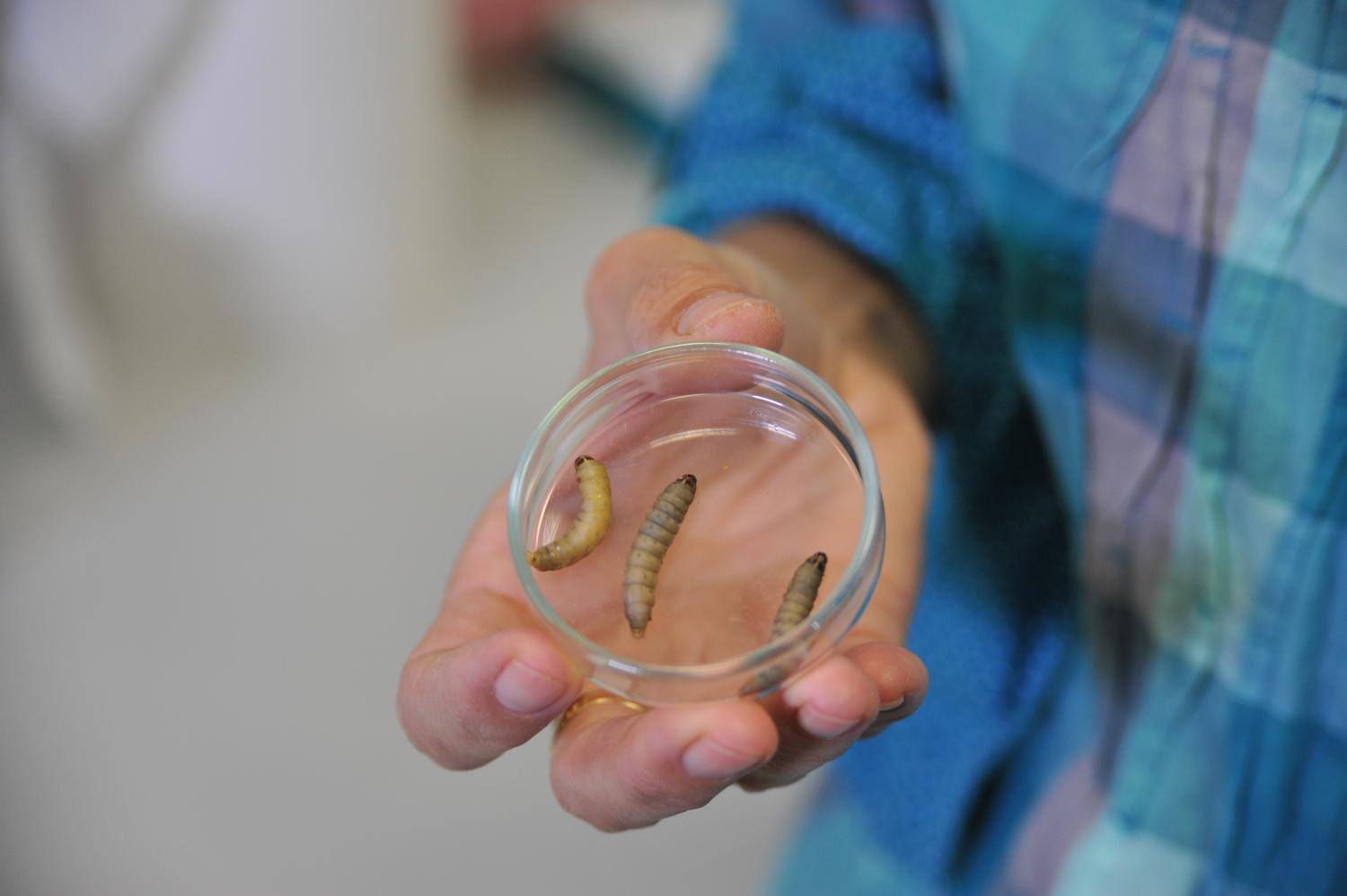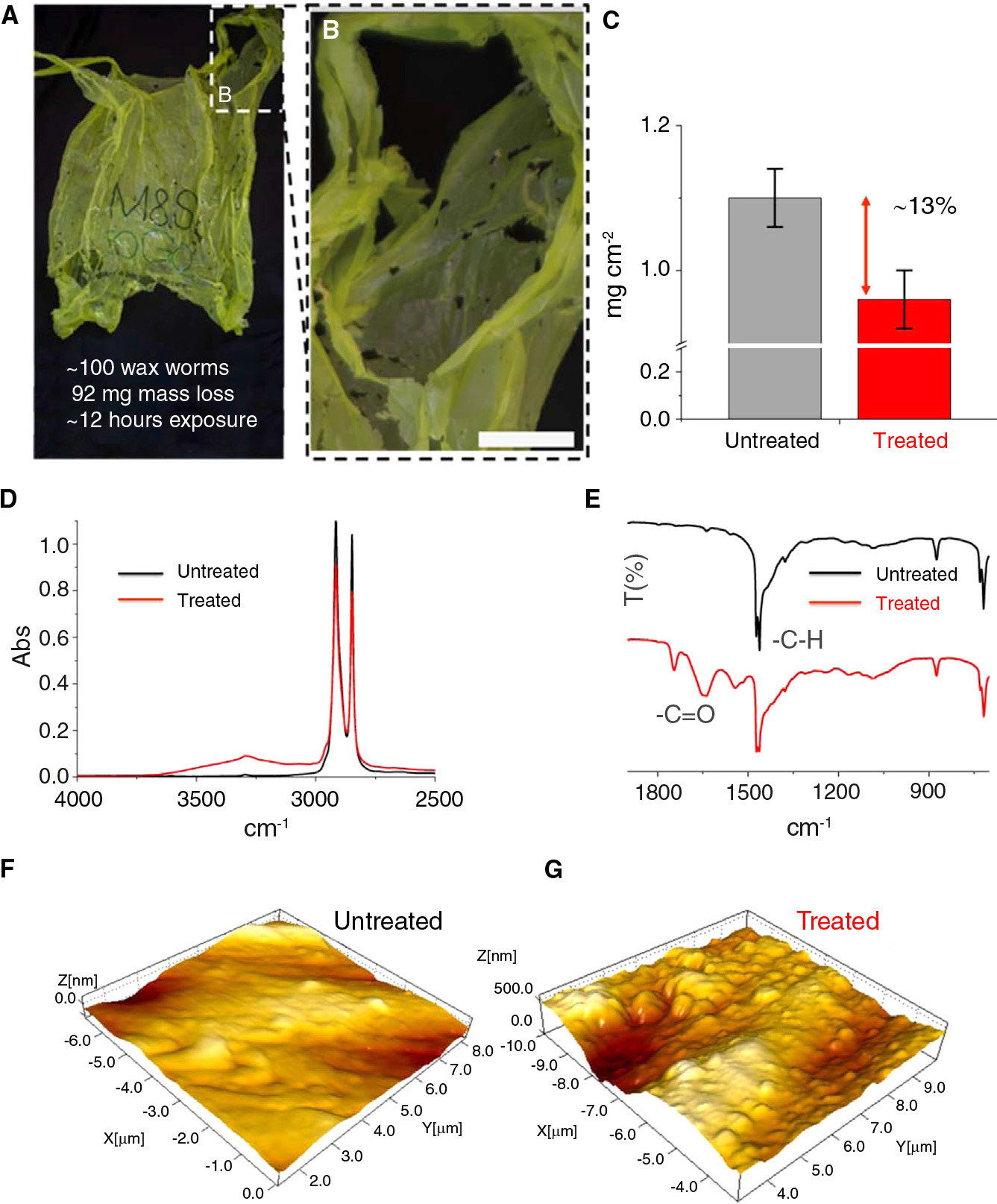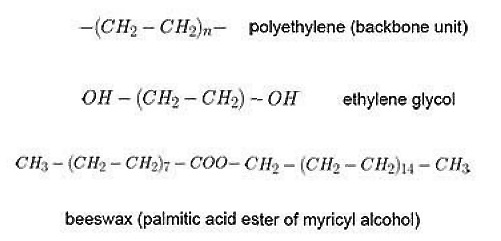An amateur Spanish beekeeper accidentally discovered that the larvae of a large wax moth devour plastic

Biologists have made a great discovery. It turns out that ordinary caterpillars, which are often bred as bait for fish, have a much more valuable property. They can recycle polyethylene - one of the most durable and commonly used types of plastic that litters landfills and the oceans everywhere. Polyethylene and polypropylene account for 92% of world plastic production, including 40% for polyethylene. Every year, people use and throw away a trillion plastic bags.
These caterpillars are the larvae of the common insect Galleria mellonella (large wax moth). The animal is considered a pest because it lays larvae in honey bee hives. There, the caterpillars feed on honey, pollen and wax (hence the name of the moth), damaging everything around: honeycombs, brood, honey reserves, pergu, frames and insulating material of the hives. But still these harmful caterpillars found useful use. Instead of wax, they can be fed plastic waste.
Plastic is one of the most dangerous materials in terms of clogging up the planet. By the combination of the prevalence and duration of natural decomposition, it has almost no equal. For comparison, paper decomposes in nature from one month to three years, clothes made of wool - a year, made of natural fabrics - two or three years, iron cans - 10 years, but a regular plastic bag decomposes 100-200 years. Among all types of garbage, according to this indicator, polyethylene is second only to aluminum cans (500 years), disposable diapers (300-500 years) and glass bottles (more than 1000 years).
')
Over the past 50 years, plastic production has grown exponentially . In the European Union, despite all efforts to recycle waste, up to 38% of plastic ends up in landfills, the rest is recycled (26%) or burned (36%). When incinerated or dumped in a landfill, polyethylene creates a serious load on the environment, so scientists are intensively looking for acceptable ways to harmless plastic degradation. Using a large wax moth caterpillar is one of the great options.
Surprisingly, this most important discovery was made quite by accident. One of the members of the research team Federica Bertocchini from the Institute of Biomedicine and Biotechnology of Cantabria (Spain) is an amateur beekeeper. Once she removed the parasites from the honeycombs in the hives - and put these pests in a plastic bag, the usual bag from the store. Literally 40 minutes later, Federica was surprised to notice that the package was speckled with small holes - the caterpillars just eaten it. And very fast!

Scientists estimate that the biodegradation rate of polyethylene by the caterpillars of the large wax moth is much higher than that of the plastic-eating bacteria reported last year. Those bacteria could eat 0.13 mg per day * , and the caterpillars devour the material literally before our eyes. The photo above shows what 10 caterpillars did with the package in just 30 minutes.
Federica Bertochini contacted colleagues from the Department of Biochemistry at the University of Cambridge - and together they set up an experiment for a while. About a hundred of the tracks were placed in a regular plastic bag from a British supermarket. Holes in the package began to appear after 40 minutes, and after 12 hours the mass of plastic decreased by 92 mg!

Scientists have yet to study the details of the biodegradation of wax and plastic, but it is very likely that the caterpillars in both cases destroy the same chemical bonds between the molecules. in substance. According to the chemical formula and its properties, wax is a polymer, something like “natural plastic”, and its structure is not much different from polyethylene.

Scientists carried out a spectroscopic analysis and checked how the caterpillars destroy chemical bonds in polyethylene. They found that the result of processing is ethylene glycol, a dihydric alcohol, the simplest representative of polyols. The analysis proved that the holes in the plastic bag are not the result of a simple mechanical chewing of the material, but there is really a chemical reaction and biodegradation of the material. In order to be 100% sure of this, biologists conducted a scientific experiment: they crushed the caterpillars into puree and mixed it with plastic bags. The result was identical - part of the plastic disappeared. This is the most convincing evidence that the caterpillars do not just eat plastic, but digest it into ethylene glycol. A chemical reaction occurs somewhere in the digestive tract of an animal - it can be salivary glands or symbiotic bacteria in the esophagus. The corresponding enzyme has not yet been identified.
The lead author of the scientific work Paolo Bombelli (Paolo Bombelli) is sure that if the chemical process is carried out using a single enzyme, then it is quite realistic to reproduce this process using biochemical methods on a large scale. “This discovery can be an important means to get rid of plastic waste accumulated at landfills and in the ocean,” he says.
The scientific work was published on April 24, 2017 in the journal Current Biology (doi: 10.1016 / j.cub.2017.02.060).
* In an experiment with bacteria, a film of 1 cm² of bacteria Ideonella sakaiensis processed 0.13 mg of polyethylene terephthalate (PET) per day.
Source: https://habr.com/ru/post/403419/
All Articles